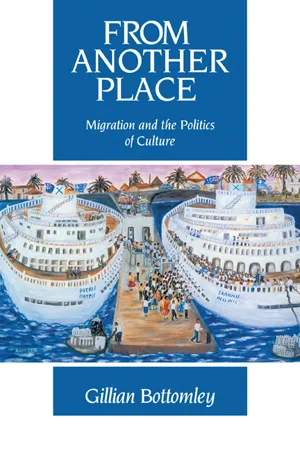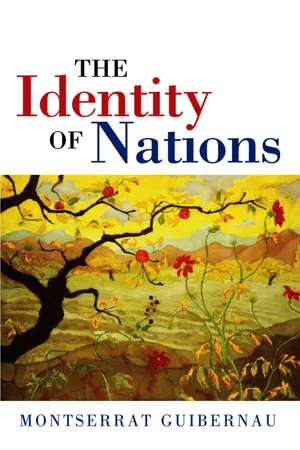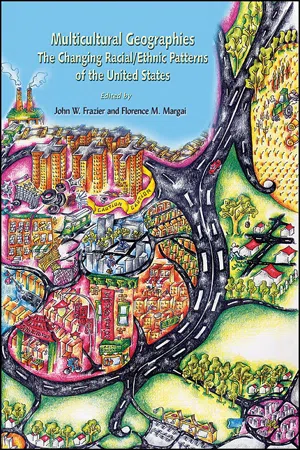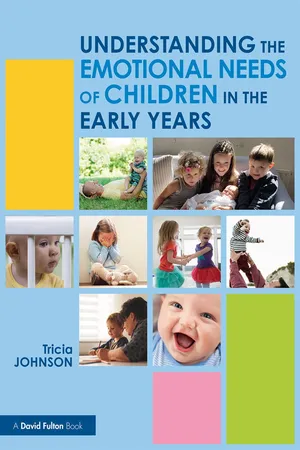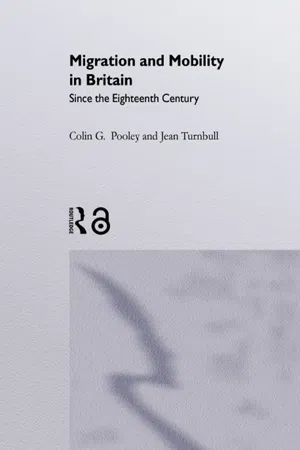Geography
Cultural Effects of Migration
The cultural effects of migration refer to the impact that the movement of people from one place to another has on the customs, traditions, language, and social norms of both the migrants and the host community. This can lead to the exchange and blending of cultural practices, as well as the emergence of new cultural identities and expressions within the receiving society.
Written by Perlego with AI-assistance
Related key terms
1 of 5
5 Key excerpts on "Cultural Effects of Migration"
- eBook - PDF
From Another Place
Migration and the Politics of Culture
- Gillian Bottomley(Author)
- 2010(Publication Date)
- Cambridge University Press(Publisher)
PA R T I Migration studies and the problem of culture CHAPTER 1 Migrations and cultural analyses: a point of departure . . . this is, after all, the century of the migrant as well as the century of the bomb, perhaps there have never been so many people who end up elsewhere than they began, whether by choice or by necessity, and so perhaps that’s the source from which this kind of reconstruction can begin. Salman Rushdie, 1987, p.63 Culture is one of the most commonly used concepts in studies of migration, yet it is curiously unexplored. The notion of culture as a way of life of a particular group of people is obviously central to the process of migration, whereby people leave one set of social and historical circumstances and move, or are moved, to another. By this very movement, migration challenges the idea of a distinct way of life. If it is possible to transport whole ‘cultures’, then their specific conditions of development must be irrelevant. Clearly, this is not the case; anthropological work has long demonstrated the intricate inter-penetrations of economic, political, geographic and social conditions in cultural practices. The process of migration, therefore, calls into question such interrelations between circum- stances and practices. Much of the material about migration and its social consequences demonstrates the considerable difficulty of attempting to answer this question. For example, social scientists often assume that culture = ethnicity, that is, a defined national or linguistic category. Hence we read discussions about multiculturalism or cultural pluralism that concentrate only on ‘ethnics’, minorities within a state. ‘Cultural studies’ on the other hand, are more likely to concentrate on class or youth ‘subcultures’ or on the practices and products of specific classes or class fractions. When these two perspectives are combined, they can provide valuable insights into the construction and transformation of ways of life. - eBook - PDF
- Montserrat Guibernau(Author)
- 2013(Publication Date)
- Polity(Publisher)
3 The Impact of Migration on National Identity Migration is not a recent phenomenon; the movement of people across the globe has been a constant in world history. What is fundamentally new about migration in late modernity concerns the relative ease with which people are able to travel around the globe on account of the radical trans-formations experienced by the transport industry. 1 The media plays a key role by disseminating images, accurate or not, of what some potential immi-grants may expect to find in what they often perceive as a land of opportu-nity that could improve their economic situation or could serve as a safe haven for those fleeing war and persecution. The diversity of migrants is greater than ever before. Wherever they settle, migrants act as carriers of distinct cultures and languages which in some cases are similar to those of the host society, while in others they are completely alien to them. Not all immigrants are regarded as ‘the same’ by the host society; thus perceptions and attitudes towards them frequently depend on physical appearance, culture, traditions, religion, language and behaviour. The number of migrants concentrating in any single area is also a significant issue, since only a ‘noticeable’ presence of migrants tends to raise fears about a potential threat to the country’s national identity and culture, and also about the labour-market impact of their presence. The social class within which migrants integrate is also relevant. For instance, at times of economic prosperity migrants may be perceived as ‘useful’, even ‘necessary’, and this may result in greater toleration of their presence. In some cases, particular countries invite immigrants to work and settle in their societies. In contrast, tensions are exacerbated when the economy slows down and unemployment rises among the indigenous popu-lation. - eBook - PDF
Multicultural Geographies
The Changing Racial/Ethnic Patterns of the United States
- John W. Frazier, Florence M. Margai, John W. Frazier, Florence M. Margai(Authors)
- 2010(Publication Date)
- Distribution Partners(Publisher)
C C h h a a p p t t e e r r 1 1 Multiculturalism and Multicultural Education in the United States: The Contributory Role of Geography FLORENCE M. MARGAI AND JOHN W. FRAZIER INTRODUCTION Settlement geography and cultural landscapes, two well-established themes of human geography, have taken on renewed importance in the study of the United States. The examination of regional cultural patterns, such as the distribution of Hispanics in the American Southwest, Germans in Texas, and Mormons in the Salt Lake Region are a few examples of the geographic research tradition. More recently, however, the following have garnered increasing attention and include new, as well as traditional, perspectives: racial and ethnic diver- sity related to recent immigration patterns, the relocation of racial/ethnic groups within the United States, and the persistence of group segregation, isolation and concomitant socioeconomic inequalities. Cultural conflict, resulting from the competition for geographic space, is a continuing theme in this re- search. Newer emphases include the analyses of various forms of inequities experienced by racial/ethnic minori- ties across geographic space (Frazier, Margai, and Tettey-Fio, 2003), the nature of cultural landscapes where various racial and ethnic groups share space, including urban landscapes in transition (Stewart, 1999), and the analysis of functional relationships that are creating new cultural and urban forms (Li et al., 2002). This newer orientation is rooted in geographic traditions; however, it also recognizes the importance of power relationships among and between cultures and subcultures of a nation, including their significance in shaping the day-to-day lives, experiences, and landscapes of racial/ethnic groups that comprise that nation. As such, this geographic perspective is part of an evolving study of multiculturalism. - Tricia Johnson(Author)
- 2018(Publication Date)
- Routledge(Publisher)
Reasons for migration What has caused migration in the past and what is causing migration now? There are many, usually external, influences that result in changes to our cultures and socie- ties and cause people to migrate. In past and present times people have migrated at 120 The effects of different cultures experienced by very young children different times of the year in order to survive. These people were/are nomadic; they moved/move to areas where crops grew well so that they could to feed themselves and their animals. Sometimes this migration was seasonal. They were often trying to ensure their survival by escaping the excessive heat of summer or the intense freezing cold of winter. Much migration takes place, as we are too aware, in times of conflict, when people wish to keep themselves and their families safe. They are searching, perhaps, for a ‘better life.’ Joining relatives who have already migrated, they may be fleeing wars, persecution and local conflicts, injury and often death. Whilst they will be entering a new culture in the area/country to which they migrate, this new culture may have a profound effect on the immigrants and their way of life. They will, however, bring aspects of their own culture with them which may impact on their new local community. The reasons for migra- tion considered here have been linked to migration from one country to another. However, moving within the United Kingdom can be considered as migration. Each country and areas within that country will have different cultures and val- ues. This is particularly noticeable in the United Kingdom which, as you know consists of England, Northern Ireland, Scotland and Wales. On the national and local news, we frequently hear about the effects that Brexit may have, especially for Ireland, Gibraltar and British Overseas Territories, and there is also the north/ south divide within England.- Colin Pooley, Jean Turnbull(Authors)
- 2005(Publication Date)
- Routledge(Publisher)
CHAPTER 10 The role of migration in social, economic and cultural change
Introduction
Analysis presented in this volume has examined the migration process from a variety of different perspectives. Following assessment of the main characteristics of the data set, the ways in which these varied over time and space, and the role of towns in the national migration system, attention has focused on migration undertaken for a variety of different reasons: employment, family motives, housing, as a response to crisis and for emigration. It has been stressed that these were rarely discrete categories—many moves were undertaken for a variety of reasons and employment, family and housing considerations often interacted to produce a migration decision—and that the precise motives for migration were at all times difficult to discern precisely. This chapter uses the evidence so far presented as a starting point to focus more specifically on the wider ramifications of the migration process, examining the relationship of different migration experiences to the processes of social, economic and cultural change which occurred in Britain during the two centuries after 1750.The central question to be addressed in this chapter can be put very simply: did migration matter? This question can be explored by focusing on the impact on individual people and their families, on the places that migrants left and went to, and on change within the wider structures of economy and society. The main difficulty in examining links between migration and social and economic change at either the individual or societal level relates to the issue of causation. The fact that migration was occurring at a time of economic change in a particular region, or of turmoil in the lives of individual migrants, does not mean that the events were necessarily related. Even if there was a relationship the nature of causation is not always clear. For instance, was migration a response to forces of change operating within society as a whole, or was the process of migration itself an agent of change? Did an individual move because of major difficulties or changes in their circumstances, or did the act of migration itself create new problems and fundamentally change people’s lives?
Index pages curate the most relevant extracts from our library of academic textbooks. They’ve been created using an in-house natural language model (NLM), each adding context and meaning to key research topics.
